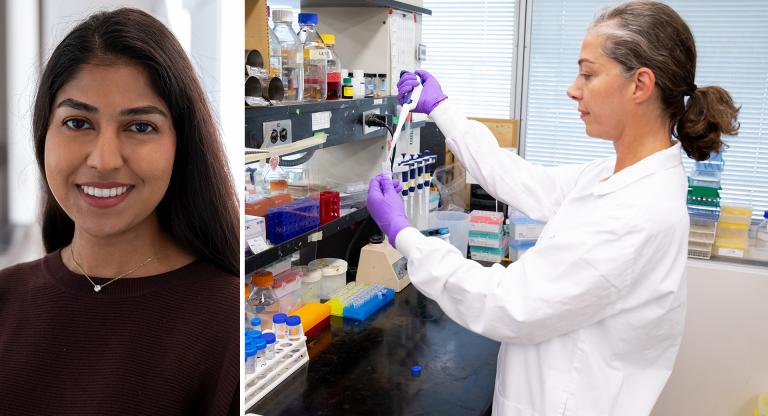New Sinai Health study looks at how cancer cells ‘feed’

A new study by Sinai Health is shedding light on how cancer cells feed and grow, in findings that could one day lead to the development new targeted therapies for certain aggressive cancers.
The study, out today in the journal Science, provides new insight into the function of the major cellular nutrient sensor that controls cell growth, called mTORC1.
A team of researchers at the Lunenfeld-Tanenbaum Research Institute looked at a process called macropinocytosis, or cellular drinking, that certain types of aggressive cancer cells use to support their rapid growth by “drinking” large quantities of molecules from their surrounding environment.
The cancer cell then breaks the molecules down inside lysosomes, the cell’s digestive compartment. Cancer cells can use macropinocytosis to “feed” deep inside tumours where they don’t receive a normal blood supply.
Dr. Geoffrey Hesketh, study first author and postdoctoral fellow at LTRI, said while other studies previously showed that amino acids can activate mTORC1 through a specific signaling pathway, their research found this same signaling pathway inhibits mTORC1 when the macropinocytosis-lysosome “feeding” pathway is used instead.
“These results provide a more complete understanding of how nutrients control cell growth and could have critical implications for identifying potential cancer vulnerabilities,” said Hesketh. “Certain forms of cancer, such as pancreatic cancer, use macropinocytosis to sustain their rapid growth deep inside tumours.”
The research was led by Dr. Anne-Claude Gingras, senior investigator at the LTRI and professor in the department of molecular genetics at the University of Toronto. Dr. Daniel Schramek and Dr. Jim Dennis also provided insight into how the macropinocytosis-lysosome “feeding” pathway impacts cancer growth and cellular metabolism.
Hesketh said the team hopes to study this process further to identify potential novel targets for cancer therapeutic development.
“If we can understand the molecular detail of how this alternative nutrient acquisition pathway works inside cancer cells, then we might be able to design new drugs to shut it down – effectively starving the cancer cells to death,” Hesketh said.
This work was made possible by the Canadian Cancer Society Research Institute and a Canadian Institutes of Health Research Foundation grant, as well as funding to the LTRI Network Biology Collaborative Centre through Genome Canada, Ontario Genomics and Canada Foundation for Innovation.
Funding for Dr. Hesketh’s salary was partially provided by Parkinson Canada and a gift from the Glowinsky-Sandler family.











